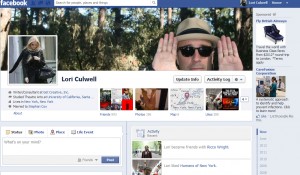Because I am (apparently) never done bombarding you with new things you need and have to pay for, let’s talk about something I use that I think you should use if you have the budget: BookFunnel.
What is BookFunnel?
Long story short, BookFunnel is a website that helps authors deliver their books to readers seamlessly. It offers a range of tools for distributing eBooks, managing giveaways, conducting pre-orders, and building an engaged reader base. By providing a one-stop shop for all of this stuff, BookFunnel simplifies the (often overly complicated) processes of book distribution and reader engagement.
Why Would You Need It?
One of the primary reasons authors use BookFunnel is its ability to facilitate seamless book distribution. That means you can deliver their books directly to readers in multiple formats, including ePub, PDF, and MOBI, ensuring compatibility across various devices and eReaders. This flexibility enhances the reader’s experience by reducing technical barriers to accessing your work. It makes your life easier because you don’t have to manage multiple emails of people having technical problems trying to open your pdf on whatever e-reader they are using at the moment (which you know all too well if you’ve ever tried to manage a free giveaway like bonus material or ARC distribution in eBook form). What you don’t want is to be trying to trouble-shoot every single person’s tech problems while you’re in the middle of your launch, and BookFunnel solves that problem for you. To me, that alone makes it worth the money.
Building and managing email lists is another advantage BookFunnel offers. As I’ve said approximately one million times, an engaged email list is one of the most valuable assets for an author, and BookFunnel integrates seamlessly with popular email marketing services like Mailerlite and Email Octopus. These integration enable authors to grow their subscriber base by offering free books or exclusive content as incentives for sign-ups, fostering a direct line of communication with their readers.
ARC distributions and bonus materials are the reason I personally use them. I used to distribute all of that kind of stuff via PDF, but then I heard a crazy nightmare story about a fellow author sending out ARCs via PDF (using one of the services, not their own list, just to be clear), and later having one of the ARC readers upload that PDF into Amazon and publish it as their own work. Because the PDF didn’t have any kind of tracking or watermarking, the author could not prove ownership to Amazon and ended up having to get a lawyer involved to get their work back.
After that I stopped distributing any of my work via PDF. Now I only use ePubs distributed through BookFunnel, with watermarking and tracking turned on. BookFunnel employs secure delivery methods to prevent unauthorized sharing and piracy. Features like DRM-free downloads and personalized download links ensure that authors’ work is protected while still being easily accessible to legitimate readers.
And look, I get that if you’re a first-time author, alot of that probably seemed like gibberish to you and something that you don’t even want to think about yet, and I get that. The problem is, that kind of thing is something that can happen to you at any time in your career (and in fact, the scary example above was for that author’s debut novel), so it actually benefits you to put some advanced security measures in place, even if it costs extra. I do feel like the money you will spend on BookFunnel is money that you would probably have spent on an ARC service if you didn’t know what you were doing, if that’s any reassurance. This is another example of “build it the first time properly and you won’t have to spend money to revise it,” I suppose.
BookFunnel Pricing
BookFunnel offers several pricing tiers to cater to authors at different stages of their careers and with varying needs. The Basic Plan starts around $15 per month and includes a limited number of downloads, basic email integrations, and standard support. This plan is ideal for authors who are just starting out and have modest distribution needs, and you can pay for a year in advance to get a discount.
The Pro Plan is approximately $29 per month and offers increased download limits, advanced email integrations, priority support, and additional customization options for delivery pages. This plan suits growing authors who need more robust features to manage their expanding reader base and promotional activities.
For established authors with larger audiences, the Premium Plan costs roughly $99 per month. It includes unlimited downloads, full access to all integrations and customization options, dedicated support, and enhanced analytics and reporting. This comprehensive plan is perfect for authors who require extensive distribution capabilities and detailed insights into their promotional efforts.
It’s important to note that pricing may vary, and BookFunnel occasionally offers discounts or custom plans for high-volume authors and publishers, making it adaptable to different budgetary requirements.
Setting Up BookFunnel
Getting started with BookFunnel is a straightforward process that begins with choosing a pricing plan on their website. Many authors start with a free trial to explore the features before committing to a paid plan. Once you’ve selected a plan, the next step is to integrate BookFunnel with your preferred email marketing service. This integration streamlines list-building by automatically adding new subscribers to your email list when they download your book through BookFunnel.
After setting up the integration, upload your properly formatted eBook files (ePub, PDF, or MOBI) to your BookFunnel account. Ensuring your book is free of errors will provide readers with the best possible experience. With your files in place, create a download page and personalize it with your branding elements—like your author photo, book cover, and a compelling call-to-action. BookFunnel’s templates make this easy, even if you have limited design skills.
Once your download page is ready, it’s time to set up your first campaign. Whether you’re planning a giveaway, a pre-order, or a promotional offer, be sure to define clear parameters for participation—such as asking readers to join your email list or share your campaign on social media. After you’ve finalized these details, distribute the download link through your website, social media channels, email newsletters, and other marketing platforms. BookFunnel’s real-time tracking tools help you monitor performance and make adjustments on the fly.
Finally, once your campaign concludes, review the analytics to see what worked and what could be improved. Use these insights to refine your future campaigns, optimizing your strategies for better results and stronger reader engagement.
Conclusion
In the competitive world of publishing, standing out requires more than just writing a great book—it involves effectively promoting and distributing it. BookFunnel offers authors a powerful set of tools to streamline these processes, from managing giveaways and pre-orders to building a loyal email list and engaging with readers. Its user-friendly interface, comprehensive features, and robust integrations make it an indispensable asset for authors aiming to maximize their reach and impact.
By investing in BookFunnel, authors can save time, protect their work, and create meaningful connections with their audience, ultimately driving greater success in their writing careers. Whether you’re launching your first novel or looking to enhance your existing promotional strategies, BookFunnel provides the support and functionality needed to thrive in today’s digital landscape.
For more information, visit BookFunnel’s website to explore how it can help you reach more readers and streamline your book promotion efforts.
 A few weeks ago I read
A few weeks ago I read 

